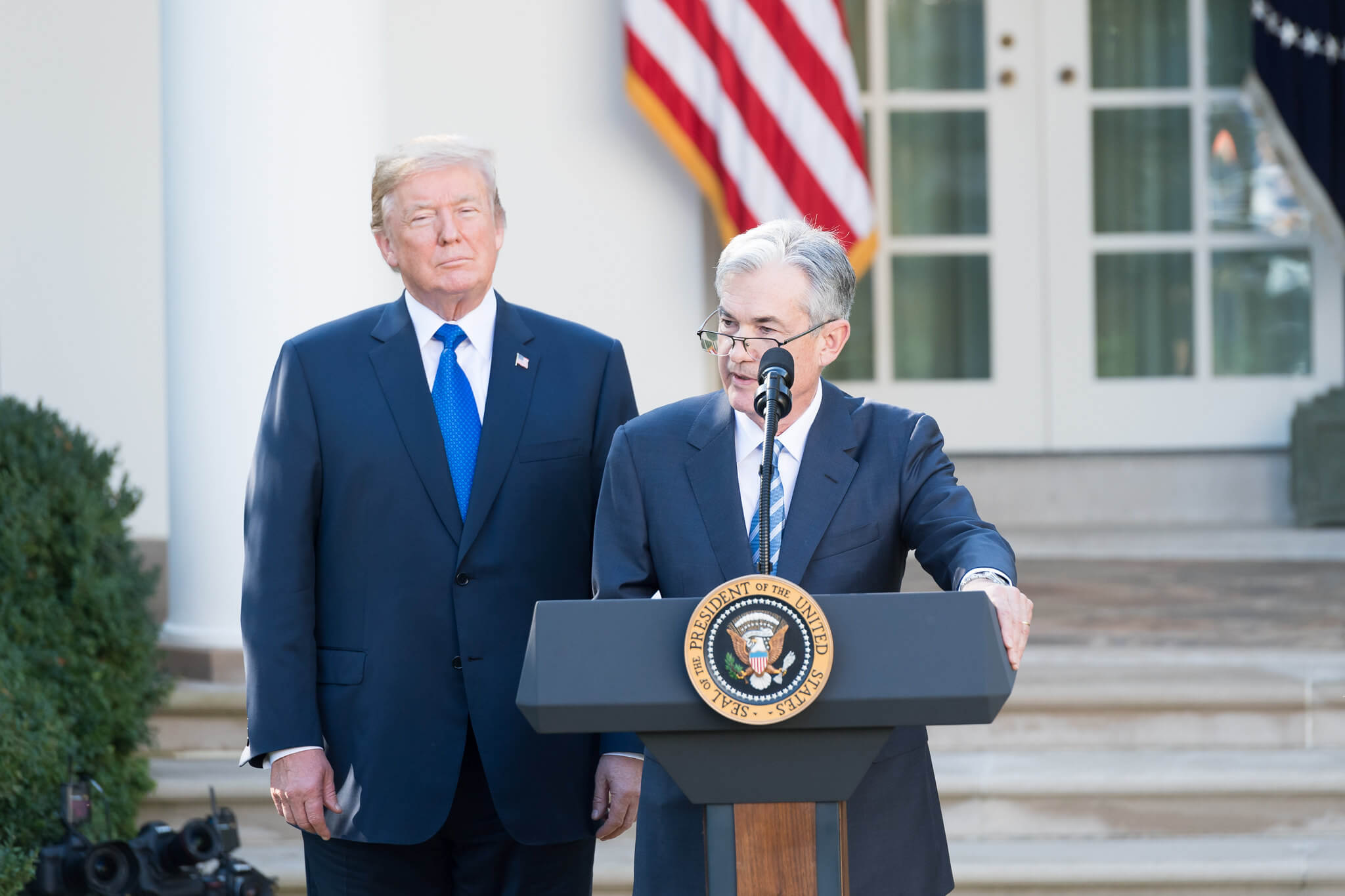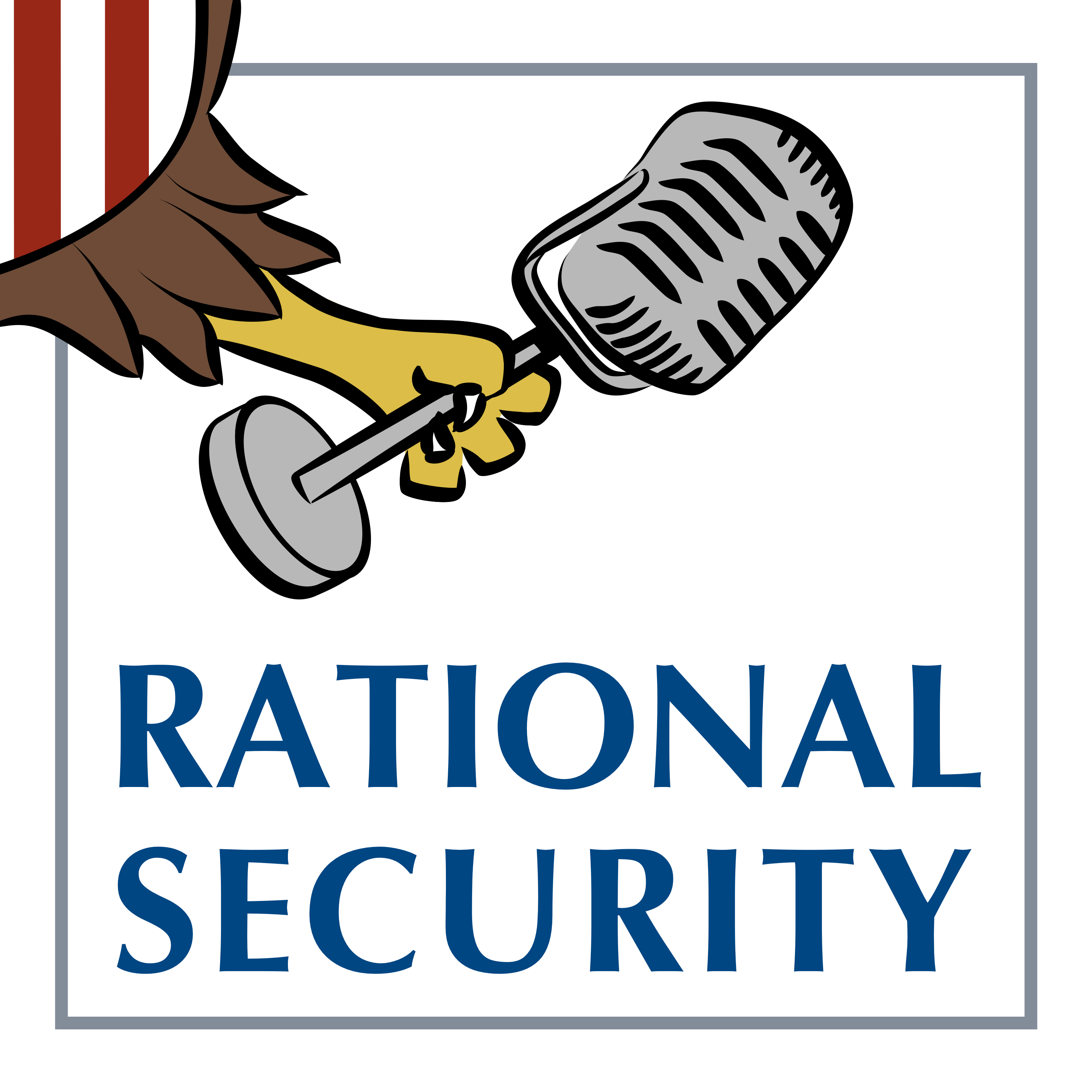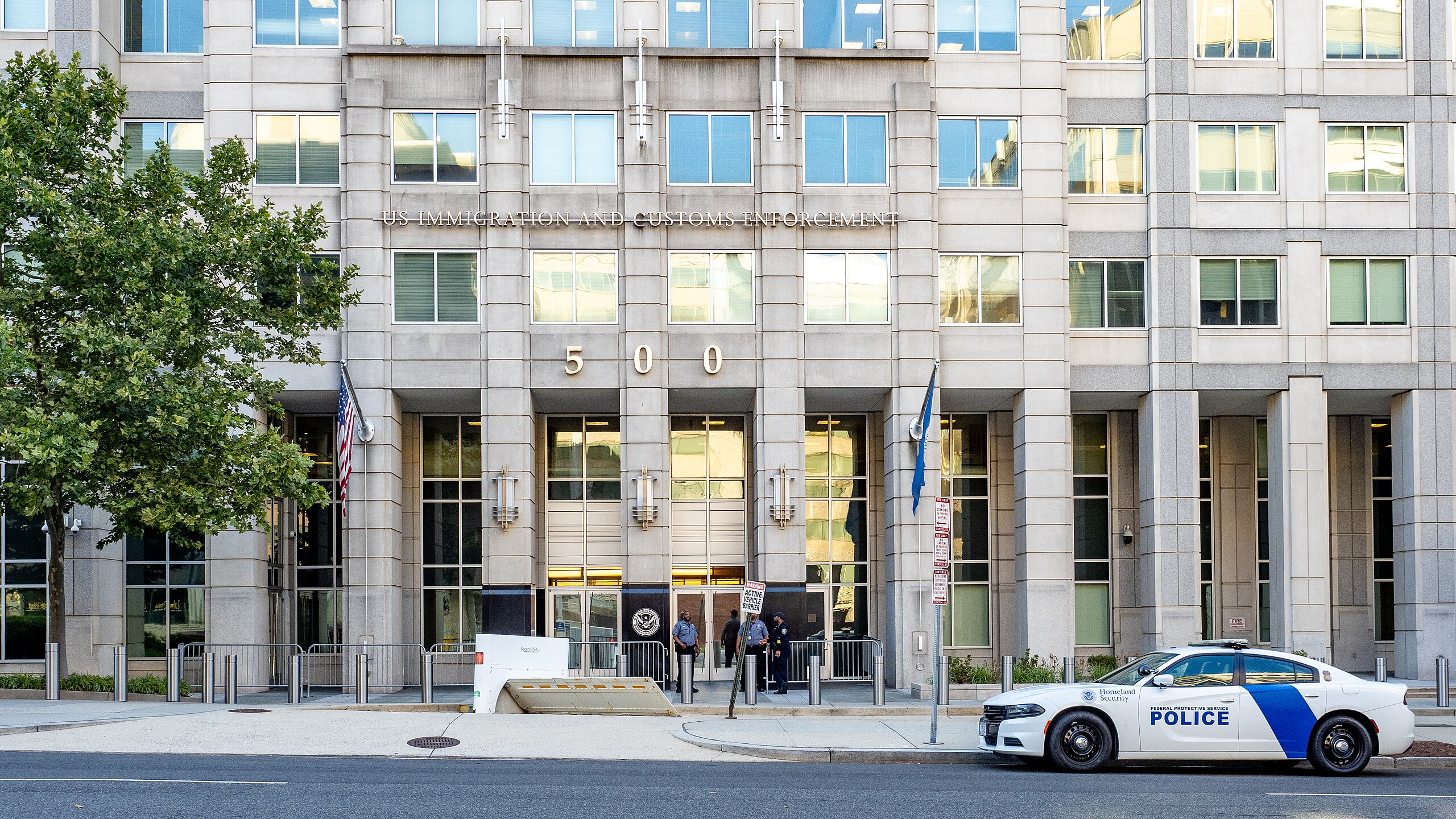Reversing Humphrey’s Executor and the Problem of the Federal Reserve
There is simply no principled way for the Supreme Court to retain the Fed’s removal protections while overturning Humphrey’s Executor.

Published by The Lawfare Institute
in Cooperation With

President Donald Trump has made overtures about removing Federal Reserve Chair Jerome Powell for failing to decrease interest rates to the president’s liking. Powell “should certainly lower them now,” Trump posted on Truth Social. “Powell’s termination cannot come fast enough!” Powell’s term is set to expire in 2028, and statutory protections permit his removal only “for cause.” Nevertheless, Trump has explained, “[I]f I want him out, he’ll be out of there real fast, believe me.”
The Supreme Court is currently evaluating an emergency petition, brought by two fired officials at the National Labor Relations Board (NLRB) and Merit Systems Protection Board (MSPB), that could overturn those protections and permit Powell and the other six Fed governors, who run the Fed as its Board of Governors, to be fired at will. The Trump administration has asked the Court to overturn the principle articulated in Humphrey’s Executor v. United States, which upheld the constitutionality of removal protections for members of independent agencies. However, carving out the Fed from any decision to overturn Humphrey’s poses operational difficulties. In short, there is simply no principled way of ensuring the Fed’s removal protections stand while striking down those of all other agencies.
The Importance of Fed Independence
As the nation’s central bank, the Fed is enormously powerful. It is considered the “lender of last resort,” stepping in to prevent banks and financial markets from failing in times of crisis. During the 2007 global financial crisis, for example, the Fed purchased over $1.7 trillion worth of government securities and debt, supplying roughly $1.2 trillion in liquidity to the financial system. During the coronavirus pandemic, the Fed purchased $700 billion in government securities and backstopped $750 billion of corporate debt. In both emergencies, the Fed decreased the interest rates at which it lent to banks and other borrowers, stimulating the economy.
The Fed clearly has the capacity to affect financial markets and the real economy. Although statute requires the Fed to conduct monetary policy—that is, changing the supply of money in the economy—“so as to promote effectively the goals of maximum employment, stable prices, and moderate long-term interest rates,” policy changes can send the economy spiraling. Efforts to decrease interest rates or increase employment for short-term political expediency can result in sky-high inflation.
The Fed’s independence is therefore paramount—and, indeed, Congress structured the bank to ensure against political decision-making. The Fed consists of both a seven-member Board of Governors, which resides in Washington, D.C., and 12 regional quasi-private Federal Reserve banks located throughout the nation. The Fed’s governors are appointed by the president with the advice and consent of the Senate to serve 14-year terms and are removable only “for cause.” By contrast, reserve bank presidents are appointed by the board following a search conducted by the bank. Monetary policy decisions are made by a Federal Open Market Committee, which consists of the seven governors and four rotating reserve bank presidents. This structure is designed to ensure maximal independence from politics.
Presidents have tried to pressure the Fed many times over its 112-year history. President Lyndon B. Johnson pressured Fed Chair William McChesney Martin to decrease interest rates to better enable the government to fund his Great Society and the Vietnam War. President Richard M. Nixon pressured Fed Chair Arthur F. Burns to fight inflation without increasing interest rates. The result of the latter effort was stagflation, demonstrating the importance of Fed independence.
Many instances in history have proved the importance of Fed independence, which allows the central bank to make decisions that are beneficial in the long term while causing short-term economic—and political—hardship. Under Chair Paul Volcker, for example, the Fed sharply raised interest rates to curtail ongoing inflation, causing a recession in the midst of a presidential election. Inflation subsided, but President Jimmy Carter lost reelection to President Ronald Reagan.
What Is Humphrey’s Executor?
Humphrey’s Executor stands for the principle that Congress may restrict the president from removing certain officials who engage in quasi-legislative or quasi-judicial activities. At issue in that case was President Franklin D. Roosevelt’s removal of William E. Humphrey, a member of the Federal Trade Commission (FTC) who opposed Roosevelt’s agenda, in spite of statutory language providing that commissioners “may be removed by the President for inefficiency, neglect of duty, or malfeasance in office.” The FTC is a five-member bipartisan body that enforces antitrust and consumer protection laws primarily by adjudicating cases. The Supreme Court ruled that Roosevelt had overstepped statutory boundaries when the president removed Humphrey. As it explained:
The authority of Congress, in creating quasi-legislative or quasi-judicial agencies, to require them to act in discharge of their duties independently of executive control cannot well be doubted, and that authority includes, as an appropriate incident, power to fix the period during which they shall continue in office, and to forbid their removal except for cause in the meantime.
Over time, the Court has upheld and narrowed this holding. In Free Enterprise Fund v. PCAOB, the Court struck down two layers of for-cause removal protections, and in Seila Law v. CFPB, the Court narrowed its interpretation of Humphrey’s Executor, explaining that it “permitted Congress to give for-cause removal protections to a multi-member body of experts, balanced along partisan lines, that performed legislative and judicial functions and was said not to exercise any executive power.” This last requirement—the agency may not exercise “executive” power—has been the center of attention in recent cases considering the constitutionality of these removal protections.
The Difficulty in Creating a Fed Exception
Chairman of the Fed is not the only position with for-cause protections that President Trump has attempted to remove or threatened to remove. Trump has moved to fire members of the NLRB and MSPB (which are the basis for the emergency petition), as well as the Federal Trade Commission (FTC), each of which is protected from for-cause removal by statute. He has not done the same for Fed governors. Media reports indicate that this restraint is an acknowledgement that doing so—with or without legal authorization—would upset financial markets. To that end, the tenure of Fed governors may be protected more by the bond market than by statute. Nevertheless, statutory removal protections may serve to reassure investors that future interest rate decisions will be made by the prudent judgment of the Fed, rather than the unreported demands of the president.
As the Supreme Court decides to overturn Humphrey’s Executor, it is already facing significant pressure from the U.S. Chamber of Commerce and the solicitor general to carve the Fed out of its decision. However, doing so in a principled way faces several problems.
First, there is the Constitution. Article II of the Constitution vests “the executive power” in the president. Proponents of a “unitary executive,” including members of the Supreme Court, believe that this language authorizes the president to control subordinates who exercise the executive power entrusted to the president by removing them at will. Shielding the Fed from presidential control requires its monetary policy activities to be considered something other than “executive power.” That argument takes several shapes, including that, because the Constitution grants to Congress the authority to “coin Money [and] regulate the Value thereof” or regulate in ways that are “necessary and proper” to ensure the 14th Amendment’s guarantee as to the “validity of the public debt of the United States,” the Fed’s performance of these activities is legislative, not executive.
But it is not clear why the Fed’s monetary policy activities should be considered legislative while the activities performed by other agencies should not. All departments and agencies created give effect to the power the Constitution bestowed on Congress. Congress has delegated to the FTC authority to regulate monopolies and to the NLRB authority to regulate labor unions on the grounds that these tasks are “necessary and proper” to “regulate Commerce … among the several States.” Accordingly, either all agencies should be legislative or none should.
One could argue that monetary policy is different. Chief Justice John Roberts hinted in Seila Law that the Fed may be able to “claim a special historical status,” and Justice Samuel Alito argued, while dissenting in Community Financial Services Association of America, that the agency is “a unique institution with a unique historical background.” Both are perhaps referring to the fact that one of the first Congress’s first acts was to charter the First Bank of the United States, a de facto central bank. However, neither it nor its successor looked anything like the Federal Reserve. The First Bank collected tax revenue for the government, made loans to the government, and facilitated government payments throughout the nation. To the extent the First Bank conducted monetary policy, it did so by redeeming other banks’ notes, forcing those that were insolvent to close and ensuring circulating notes were backed by hard currency. The First Bank did not set the value of money, regulate other banks, hold banks’ reserves, or serve as the lender of last resort, as the Fed does today.
Or perhaps Roberts and Alito are referring to the Sinking Fund Commission, a multi-member entity created by the First Congress to purchase government securities that included the vice president and chief justice as commissioners. That neither could be removed by the president could be taken to indicate that agencies undertaking activities similar to those of the commission may be protected by Congress. However, purchasing government securities is considered monetary policy only when those securities serve as a money substitute, which they did not at the time because the government did not issue its own currency until the 1860s. In addition, it is illogical that, of all the powers Congress possesses, authority to purchase government bonds should be the only one for which it may provide removal protections. Although Christine Kexel Chabot notes that prior sinking funds faced political corruption necessitating independence from the English crown, such corruption is possible in every governmental function.
There is also the problem that the activities that constitute “monetary policy” (for example, making loans, buying and selling financial assets) may be performed today by other agencies in addition to the Fed. When the United States was on the gold standard, part of the Fed’s monetary policy role was to keep a sufficient amount of gold on hand to cover a percentage of its notes in case of redemption. Since the end of the gold standard in 1973, the Fed’s monetary policy activities have consisted of ensuring that the “appropriate” amount of money is circulating in the economy relative to the goods and services available. Although the Fed is important to this goal, so are all the other agencies capable of supporting or collapsing economic activity. When economic capacity is constrained in ways that lead to higher prices, efforts to expand supply or decrease demand of products will allow economic output to increase and prices to fall. Similarly, efforts to constrain supply or demand can depress output, increasing prices. Agencies that enforce consumer protections, trade laws, labor rights, immigration, and the gamut of private-sector regulations all may have these effects.
Relatedly, the Fed has traditionally conducted monetary policy by setting interest rates on the loans it makes and on banks’ reserves held with the regional banks. The Federal Home Loan Bank System, which Congress originally created as a central bank for thrifts, consists of 11 regional banks that provide liquidity in the form of loans to their members and interest on deposits. Yet the Supreme Court ruled in Collins v. Yellen that removal protections for their regulator, the director of the Federal Housing Finance Agency, were unconstitutional. Other agencies, such as the Federal Deposit Insurance Corporation (FDIC) and the Community Development Financial Institutions Fund also make loans to banks. The only way the Fed is able to buy bonds and make loans to the extent it has is because it gets to set its own accounting rules, placing a $100+ billion “negative liability” on its balance sheet in order to declare itself solvent.
Lastly, there is the problem that the Fed engages in both monetary policy and bank regulation, such that it is impossible to retain the Fed’s removal protections by exempting monetary policy from any repeal of Humphrey’s without also retaining bank regulation. The Fed regulates state-chartered banks that are members of the Federal Reserve System, as well as bank holding companies. This bank regulation is more akin to the activities performed by the NLRB, FTC, and other agencies than monetary policy. If the Supreme Court decides that the removal protections of regulatory agencies like the above are unconstitutional on the grounds that these agencies wield “significant executive power,” that logic undoubtably applies to the Fed’s bank regulatory authority as well. One solution, therefore, is to cleave the Fed’s two sides, moving its bank regulatory authorities to another agency. Unless or until Congress amends the Federal Reserve Act to do that, however, Fed governors will be subject to at-will removal.
The Court could, of course, declare that the Fed’s bank regulation authority is necessary for the conduct of monetary policy. This argument is, however, inaccurate, ahistorical, and unwieldy. The Fed does not have authority to regulate national banks or state banks that are not members of the Federal Reserve System, which are regulated by the FDIC and Office of the Comptroller of the Currency, respectively. The National Credit Union Administration also regulates credit unions, which operate akin to banks, and some state banks operate entirely without federal regulation. Indeed, the reason that Congress did not grant the Fed authority to regulate all banks is that it did not believe it had the constitutional authority to do so. Thanks to Lochner-era judicial decisions, legislators believed that they could not subject state-chartered banks to federal regulation without their proactive acquiescence. To that end, it is clear that Congress does not think bank regulation and monetary policy must go hand in hand.
Even if the Court did decide to exclude “bank regulation” from any repeal of Humphrey’s Executor as necessary for monetary policy, it begs the question: Where does “bank regulation” stop? One of the most significant ways the Fed performs monetary policy today is by buying and selling bonds from primary dealers, which are financial institutions regulated by the Securities and Exchange Commission (SEC). If the SEC fails to adequately regulate primary dealers, the Fed’s monetary policy efforts become much more difficult. Should the SEC be considered a bank regulator? Similarly, the Commodity Futures Trading Commission (CFTC) regulates derivatives markets, including the $315 trillion interest-rate swap market that helps institutions manage changes in interest rates and the banks that participate in them. Should the CFTC be considered a bank regulator?
***
There is simply no principled way for the Supreme Court to retain the Fed’s removal protections while overturning Humphrey’s Executor and statutory protections for other agencies. Any decision would violate the Constitution’s text, could not be constrained to the Fed, or would arbitrarily decide that bank regulation is required for monetary policy.





